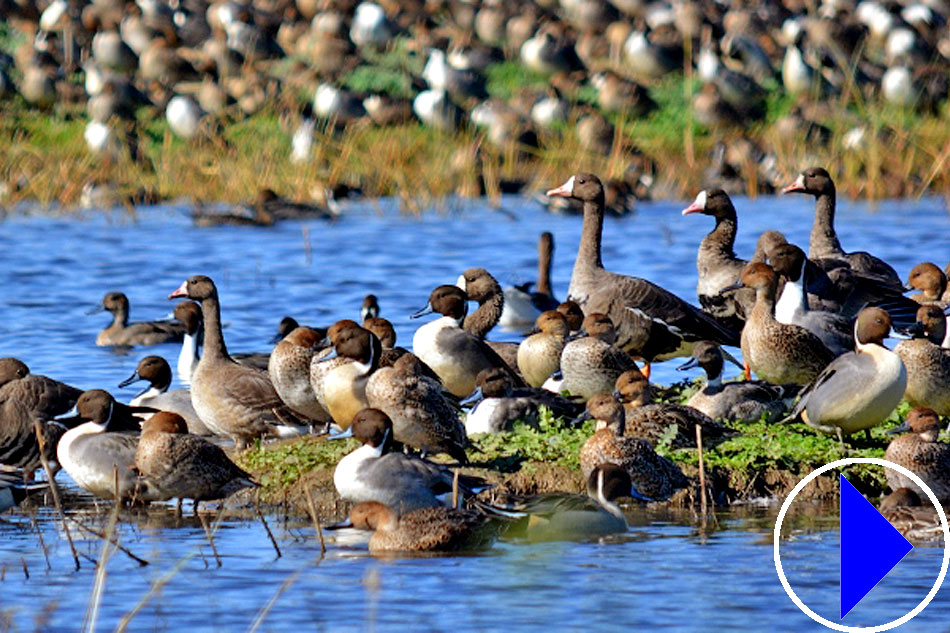
BIRDS, SACRAMENTO WILDLIFE REFUGE, LIVE WEBCAM
- Local time
- Location: Sacramento Wildlife Refuge, Willows, California, United States
- Source: Explore Birds Bats Bees
-
Info: Live streaming webcam showing birdlife at
Sacramento National Wildlife Refuge in California, United States.
Sacramento National Wildlife Refuge typically supports wintering populations of more than 600,000 ducks and 200,000 geese.
The view shows a seasonal wetlands pond filled with migrating waterfowl and raptors.
More info: The Sacramento National Wildlife Refuge is located about 90 miles north of the city of Sacramento, in northern California.
The Refuge provides nearly 70,000 acres of wetland, grassland, and riparian habitats for a wide array of waterfowl, shorebirds, raptors, waterbirds, songbirds, reptiles, and mammals. The Complex currently supports nearly 300 species of birds.
Video showing some of the birdlife at Sacramento Wildlife Refuge :
Video courtesy of Geoffrey Tipton Wildlife Photography
Flocks of shorebirds begin arriving in August and September. Northern Pintails are the first duck to arrive and signal the beginning of fall migration. White-fronted geese will follow. White geese begin to appear in October.
Duck and geese numbers peak at the Refuge in November and December. Snow and Ross's geese, mallard, wigeon, teal, bufflehead, ruddy duck, northern shoveler and ring-necked ducks enjoy the flooded marsh. As February arrives, waterfowl numbers decrease as they spread across the Sacramento Valley and some begin to migrate north.
As ducks and geese leave for their breeding grounds, shorebirds arrive. Sandpipers, dowitchers, dunlin, avocets, black-necked stilts and others probe the mudflats for food. Vernal pools become a display of colors. The riparian areas of Sacramento River NWR and Sutter NWR are alive with migrating neotropicals.
As the temperatures rise the water disappears across the refuges. Herons, egrets, grebes, and some ducks remain to nest in the premanent ponds. Orioles, swallows, and flycatchers are found amongst the trees.
Additional Information:

